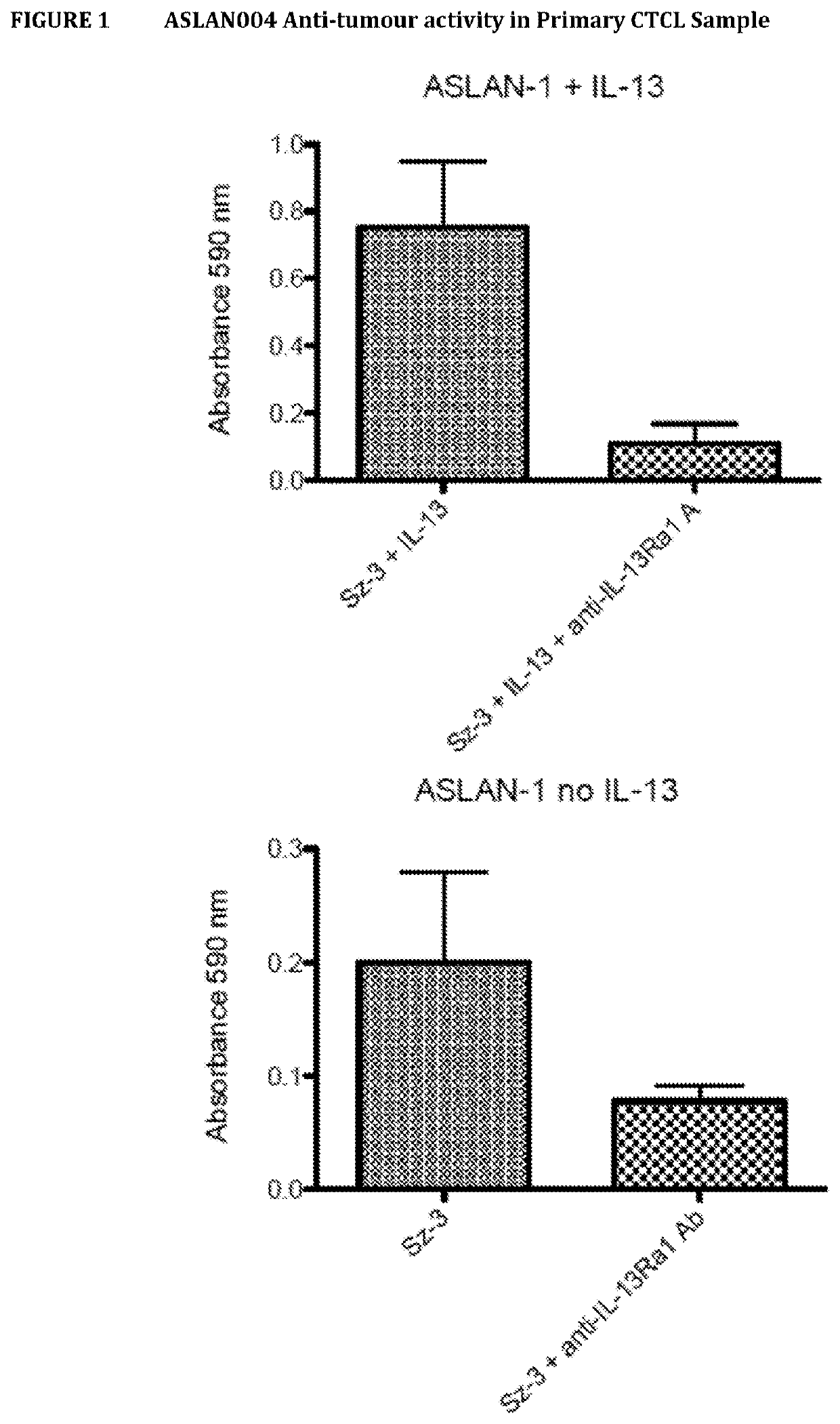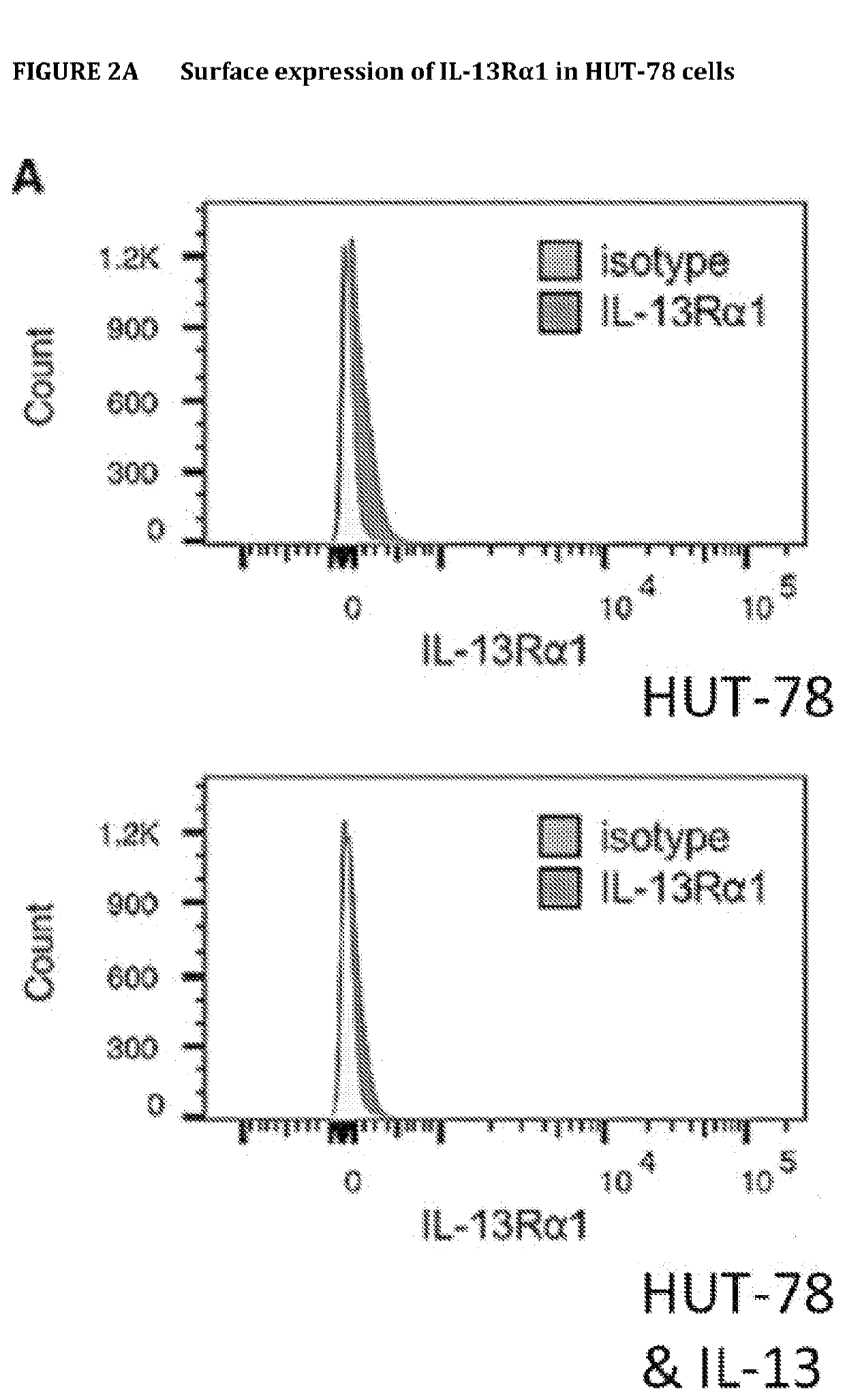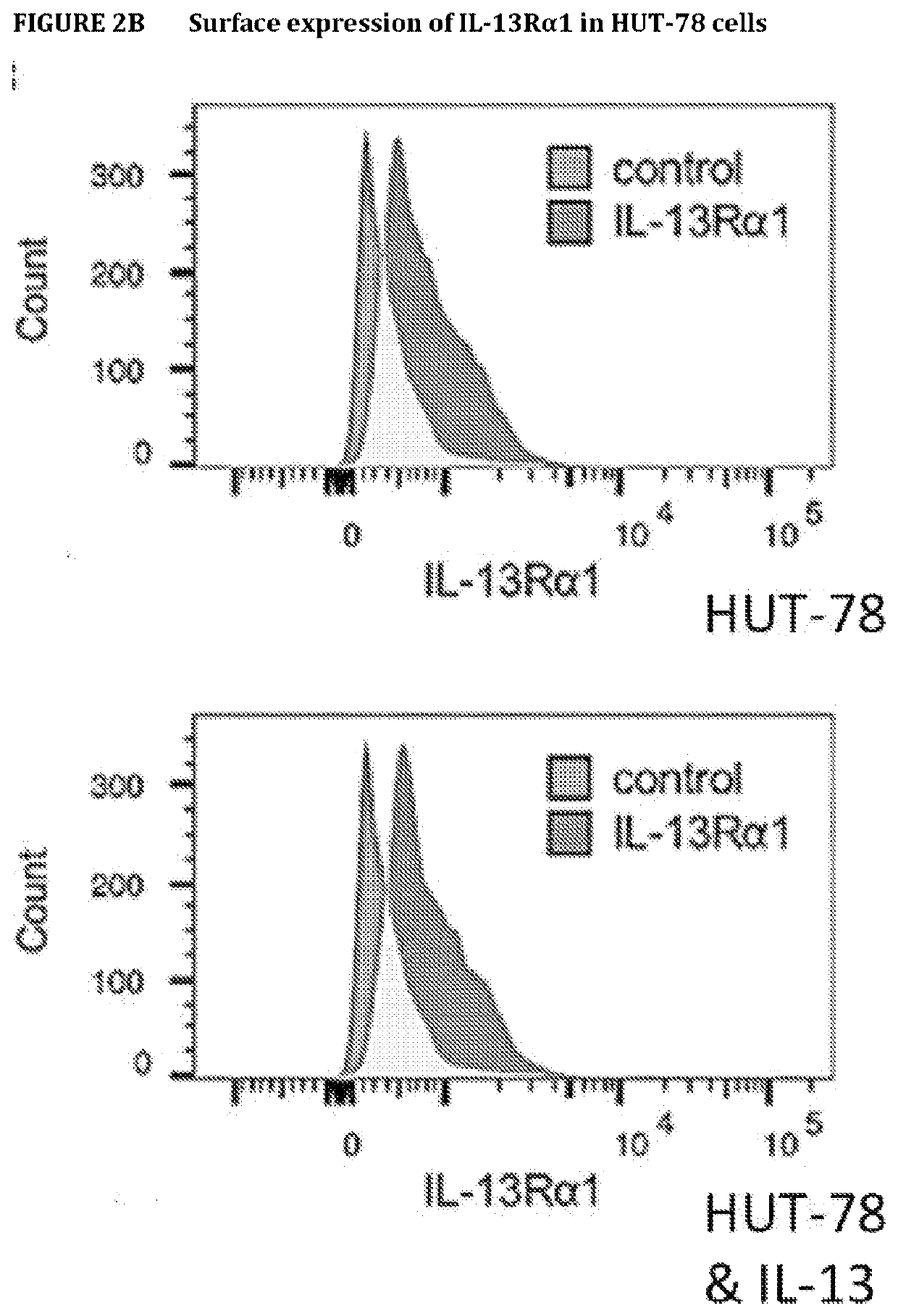Method of treatment using il-13r antibody
a technology of il-13r and antibody, which is applied in the field of treatment using il-13r antibody, can solve the problems of indefinitely lasting stable disease and less satisfactory situation
- Summary
- Abstract
- Description
- Claims
- Application Information
AI Technical Summary
Benefits of technology
Problems solved by technology
Method used
Image
Examples
example 1
[0284]The monoclonal antibody ASLAN004 (an anti-IL-13Rα1 antibody) was tested on leukemic cells from a patient with Sézary Syndrome. In vitro the antibody concentration employed was 0.01 μg / ml. The results are shown in FIG. 1, which shows that the antibody has anti-tumor activity in the absence and also in the presence of IL-13.
example 2
[0285]HUT-78 have surface expression of IL-13Rα1, which can be measured by flow cytometry. Expression of IL-13Rα1 was determined by flow cytometry in Hut-78 cells treated with / without IL-13 (100 ng / ml) (dark grey histograms). We employed 2 different Abs; the anti-IL-13Rα1 from R&D (A) or from Sigma (B). As controls (grey histograms), we used the isotype in (A) and only the secondary Ab in (B).
[0286]The results show that HUT-78 cells expressed IL13Rα1 on their cell surfaces. Also, IL-13Rα1 expression does not change with or without addition of IL-13. Lastly, the results indicate a greater dynamic range with the anti-IL13Rα1 antibody from Sigma (B) vs the antibody from R&D (A).
example 3
[0287]Cells were pre-incubated with inhibitors (a1=ASLAN004; a2=anti-IL-13Ra2 Ab (Biolegend); STAT-6 inhibitor=AS 1517499 (Axon) for 1 hr at 37 C followed by addition of medium alone (A) or IL-13 (B). Statistics by ANOVA followed by Tukey's post-hoc test. The results are shown in FIG. 3. ASLAN004 was a potent inhibitor of HUT-78 cell proliferation in the presence and also in the absence of IL-13.
PUM
| Property | Measurement | Unit |
|---|---|---|
| molecular weight | aaaaa | aaaaa |
| molecular weight | aaaaa | aaaaa |
| molecular weight | aaaaa | aaaaa |
Abstract
Description
Claims
Application Information
 Login to View More
Login to View More - R&D
- Intellectual Property
- Life Sciences
- Materials
- Tech Scout
- Unparalleled Data Quality
- Higher Quality Content
- 60% Fewer Hallucinations
Browse by: Latest US Patents, China's latest patents, Technical Efficacy Thesaurus, Application Domain, Technology Topic, Popular Technical Reports.
© 2025 PatSnap. All rights reserved.Legal|Privacy policy|Modern Slavery Act Transparency Statement|Sitemap|About US| Contact US: help@patsnap.com



